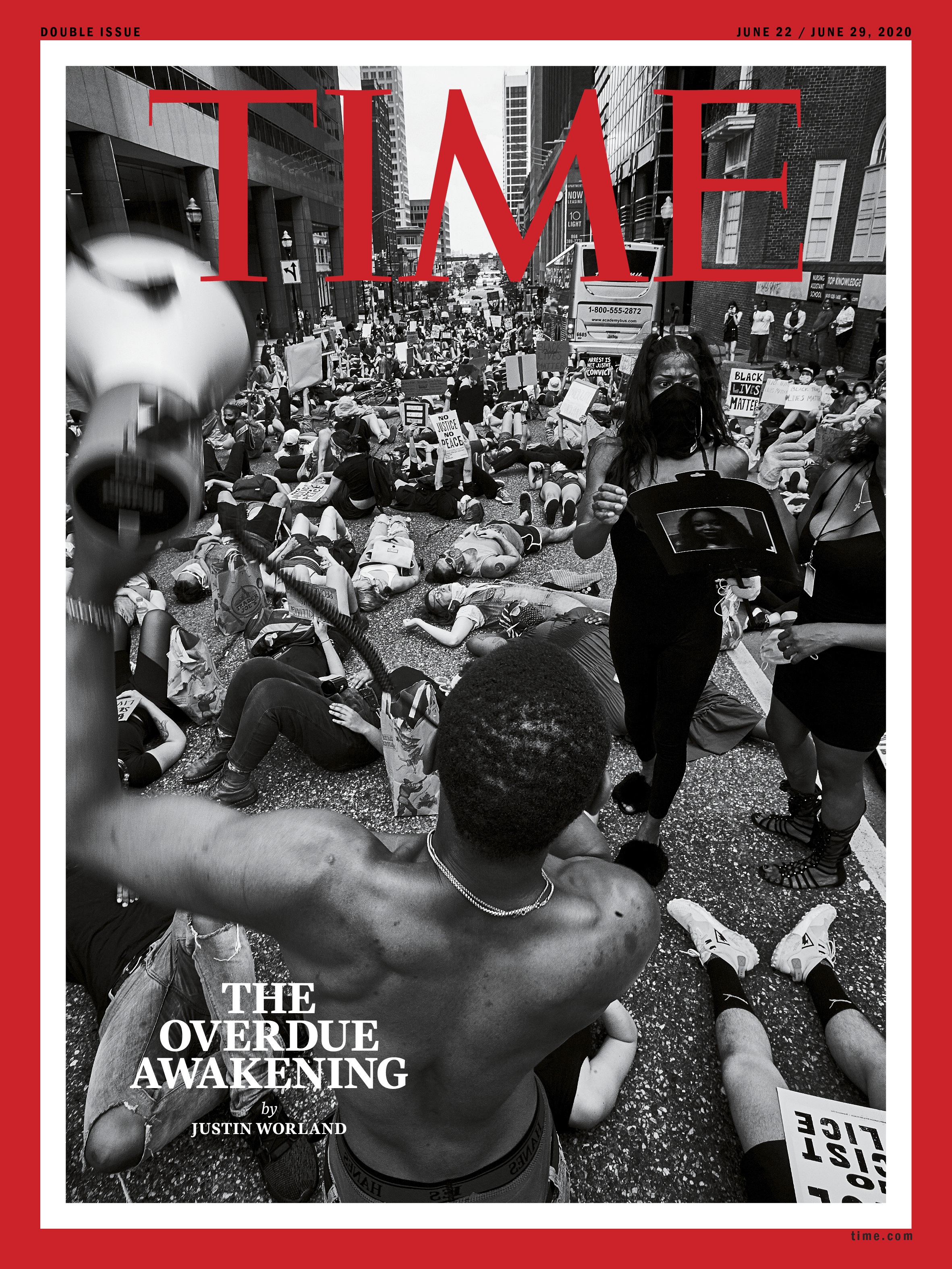
During one of our recent TIME 100 talks, the singer, actor and activist Andra Day made a point that resonated deeply and echoes words I have heard repeatedly in recent days from colleagues and other people in my life. Being a true advocate of change, a true ally to the Black community, requires “the willingness to be uncomfortable.”
This has been a time of essential discomfort for the U.S.–“a moment of reckoning that has been a long time coming,” as my colleague Justin Worland writes in this issue’s cover story, a searing and personal accounting of American denial about systemic racism. “Politicians, activists and everyday people can and should debate what to do about this reality,” Justin writes, “but it is a reality, one evident in volumes of data, research and reporting, not to mention the lived experience of millions of African Americans.”
The photograph on our cover was taken by Devin Allen at a Black Trans Lives Matter protest on June 5. We first put Devin’s work on the cover five years ago when he was 26 years old, an aspiring professional photographer documenting the protests that broke out in his hometown of Baltimore after the death of Freddie Gray in police custody. The image Devin made in 2015 so powerfully evoked scenes of America in 1968 that we used both dates in the headline, a recognition that far too little had changed. Soon after the killings of George Floyd, Ahmaud Arbery, Breonna Taylor and Tony McDade, that 2015 cover began circulating again on social media, with a superimposed third date: 2020.
The issue includes a portfolio from Ruddy Roye, who was with Floyd’s friends and family as they prepared to memorialize him in Houston. And as millions search for ways to support what has become a worldwide movement for equality, TIME’s Sanya Mansoor provides guidance on how to help.
We are also publishing one of the most ambitious projects we’ve done on the COVID-19 pandemic. For four weeks, starting in April, correspondent Simon Shuster, photographer Meridith Kohut and a team of videographers, including TIME’s Julia Lull, spent nearly every day and many nights at the Wyckoff Heights Medical Center, the site of New York City’s first death from COVID-19. The team, led by senior editor Tina Susman and deputy director of photography Andrew Katz, documented the crisis from the vantage point of nearly everyone it touched at Wyckoff, and shows in devastating detail its disproportionate impact on Black and brown neighborhoods.
At TIME, we will always stand for the equality of every person. That is not a partisan or a policy position. It is a basic human value that runs through our coverage. We also recognize that we must hold ourselves accountable for ensuring that it runs through our company. Across countless conversations all over the globe, we are pushing one another on turning discomfort into action. Where do we need to challenge and change existing structures and ways of working? How, as people who are in the business of words, do we get better at naming what we see and doing something about it? We know that amplifying underrepresented voices in our newsroom and increasing the diversity of our teams will make our coverage stronger. We also know that we need to do better, and we will. I am grateful for the trust of our team in pushing us forward with candor and courage.
TIME is a 97-year-old institution but only a 19-month-old company, since our acquisition by Marc and Lynne Benioff. As I wrote to you after their purchase of TIME in November 2018, the Benioffs have challenged us to think about how to build for the long term. What will TIME mean to people decades from now? We are committed to making equality a constant on that journey.
More Must-Reads from TIME
- Why Biden Dropped Out
- Ukraine’s Plan to Survive Trump
- The Rise of a New Kind of Parenting Guru
- The Chaos and Commotion of the RNC in Photos
- Why We All Have a Stake in Twisters’ Success
- 8 Eating Habits That Actually Improve Your Sleep
- Welcome to the Noah Lyles Olympics
- Get Our Paris Olympics Newsletter in Your Inbox
Contact us at letters@time.com